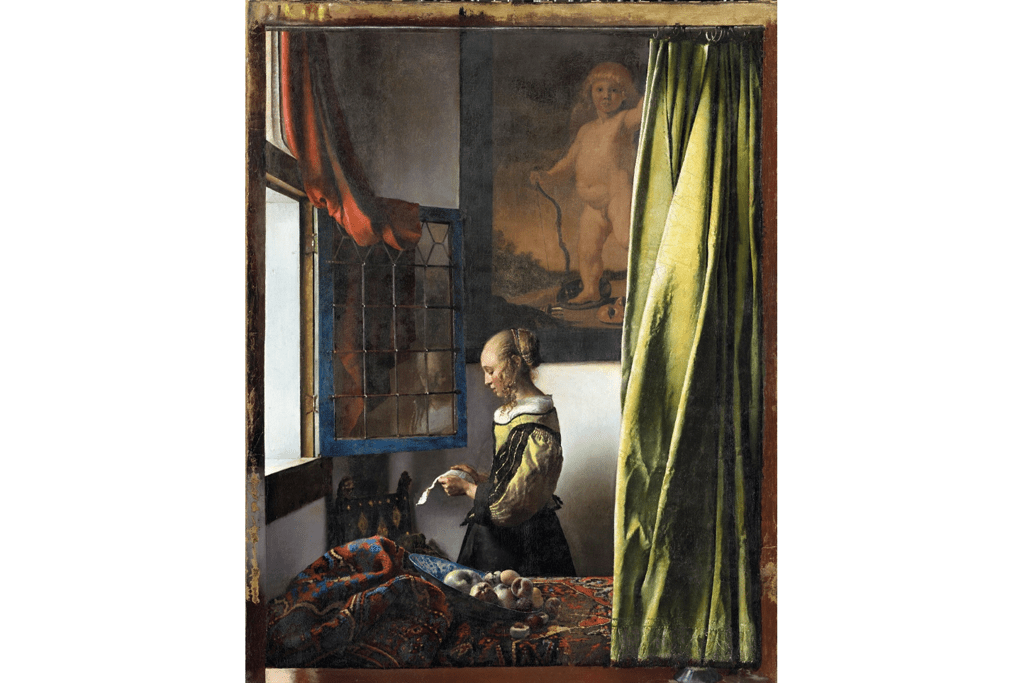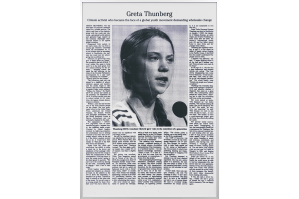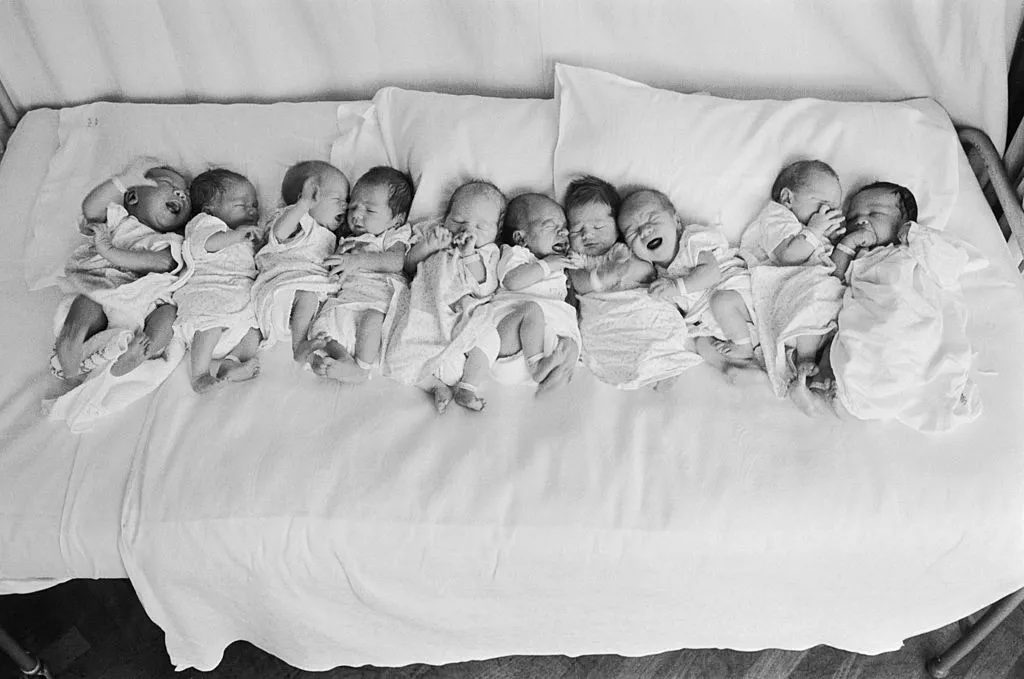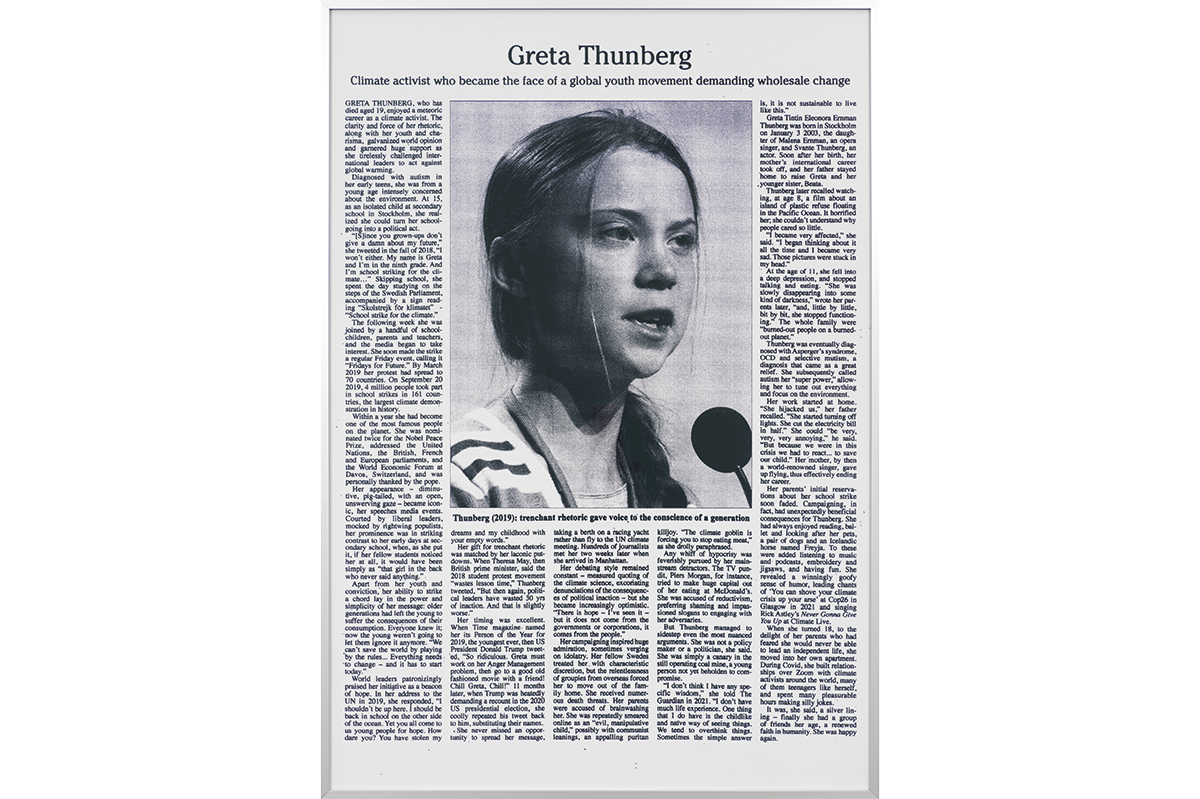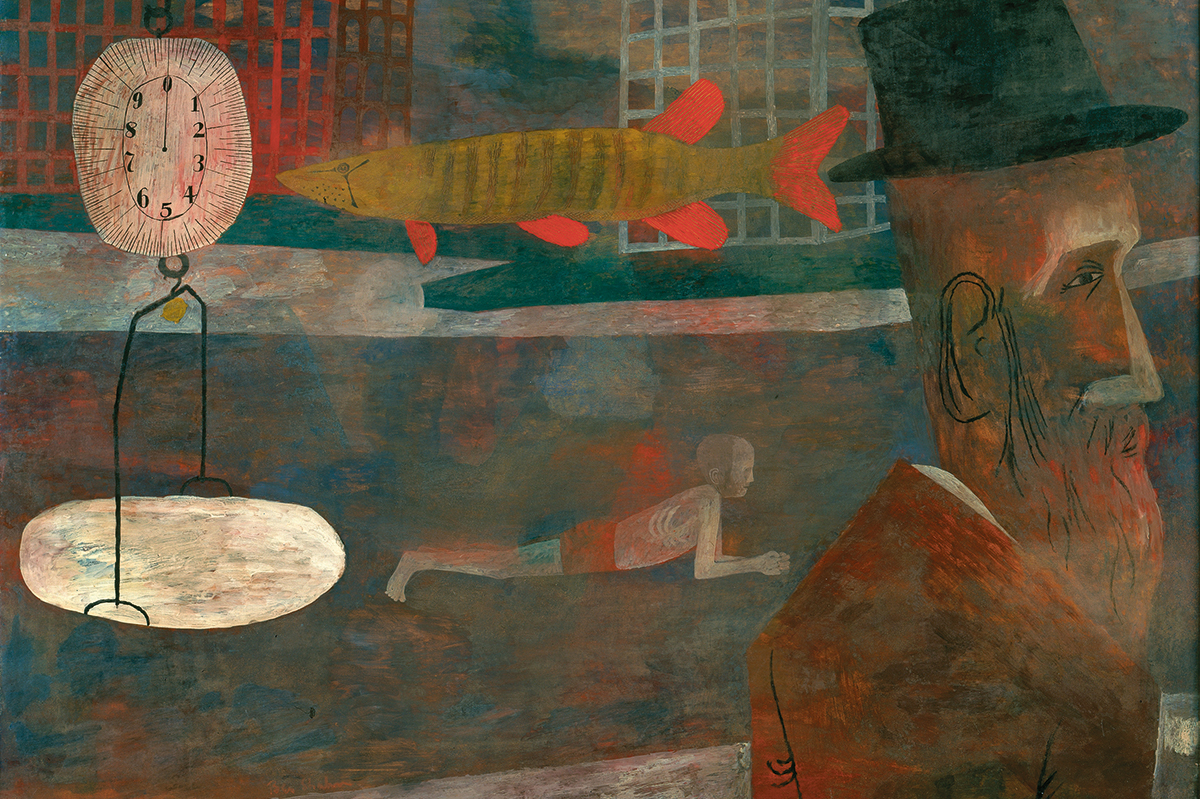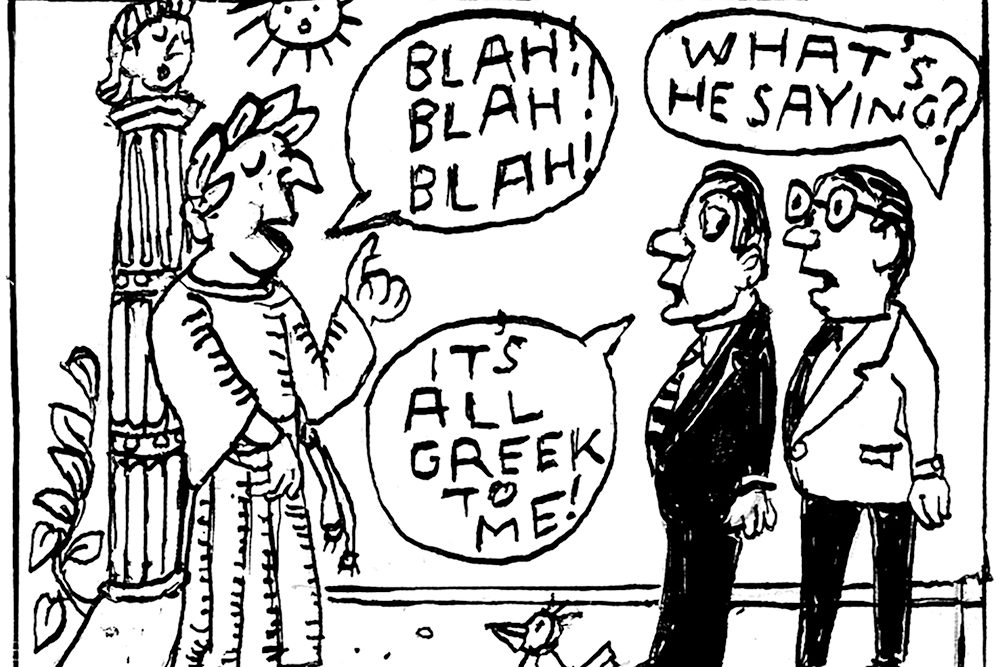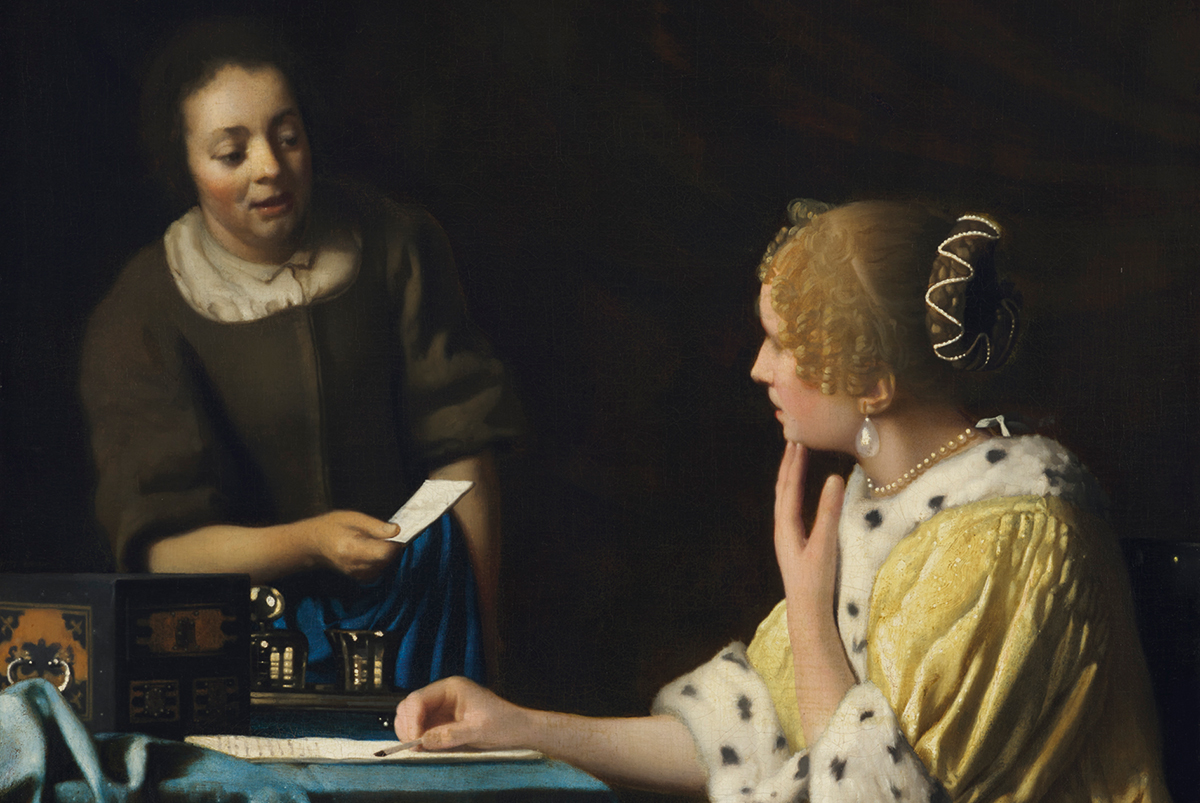Has any artist ever painted fewer pictures than Johannes Vermeer? At the last authenticated count there were thirty-seven still in existence, and five more are known from references in early sources. With allowance for wastage and disappearance historians estimate that he produced no more than fifty, a rate of two a year over a career spanning two decades. So when twenty-eight are assembled in one exhibition, as currently at the Rijksmuseum, it counts as a blockbuster.
Astonishingly, this is the museum’s first Vermeer exhibition. Holland’s national gallery has not always valued its most popular master: when it opened in 1885, the only Vermeer on show, “Woman in Blue Reading a Letter” (c. 1663-64), was a loan. A celebrity artist in his lifetime, after his early death the painter from Delft was forgotten by all but a few connoisseurs; the occasional painting that trickled on to the market tended to be attributed to better known artists. It was the French eighteenth-century painter and collector Jean-Baptiste-Pierre Lebrun who first spotted that “this vander Meer about whom historians haven’t spoken at all, deserves special attention” and the British art dealer John Smith who put the puzzle of his genius in a nutshell when he observed in an 1833 catalog: “This painter is so little known, by reason of the scarcity of his works, that it is quite inexplicable how he attained the excellence many of them exhibit.”
How indeed? The curators of this exhibition, the biggest ever collection of Vermeer’s works in one place — including the artist’s studio — are still unable to offer an explanation. Where did he train before registering as a master in Delft in 1653? Did he make a study trip to Italy? Did he work alone or with assistants? No one knows. The question of whether he used a camera obscura gets considerable attention from the show’s co-curator Gregor J.M. Weber in an interesting new book, Johannes Vermeer: Faith, Light and Reflection, exploring his possible debt to Jesuit theories on optics, but no definitive answer is given.
All we have to go on are the paintings, and they suggest an artistic journey with a false start. Until the discovery of his signature in 1901 on the earliest work in the show, “Christ in the House of Mary and Martha” (1654-55), few would have believed that it was by Vermeer; its large scale, Italianate style and religious subject seem completely foreign to the painter of Dutch domestic interiors. A year or two before, the twenty-year-old Calvinist artist had married a Catholic, Catharina Bolnes, and possibly converted; at any rate the couple set up house in the part of town known as Papists’ Corner, next to a Jesuit mission and Catholic girls’ school for which the painting may have been a commission. But in the next work in the show, “The Procuress” (1656), Vermeer chucked in the sacred for the profane and went Dutch. Spiritually speaking, it could have been the road to damnation but artistically it was a step in the right direction: it rescued him from a Caravaggist cul-de-sac and restored him to the everyday world he knew.
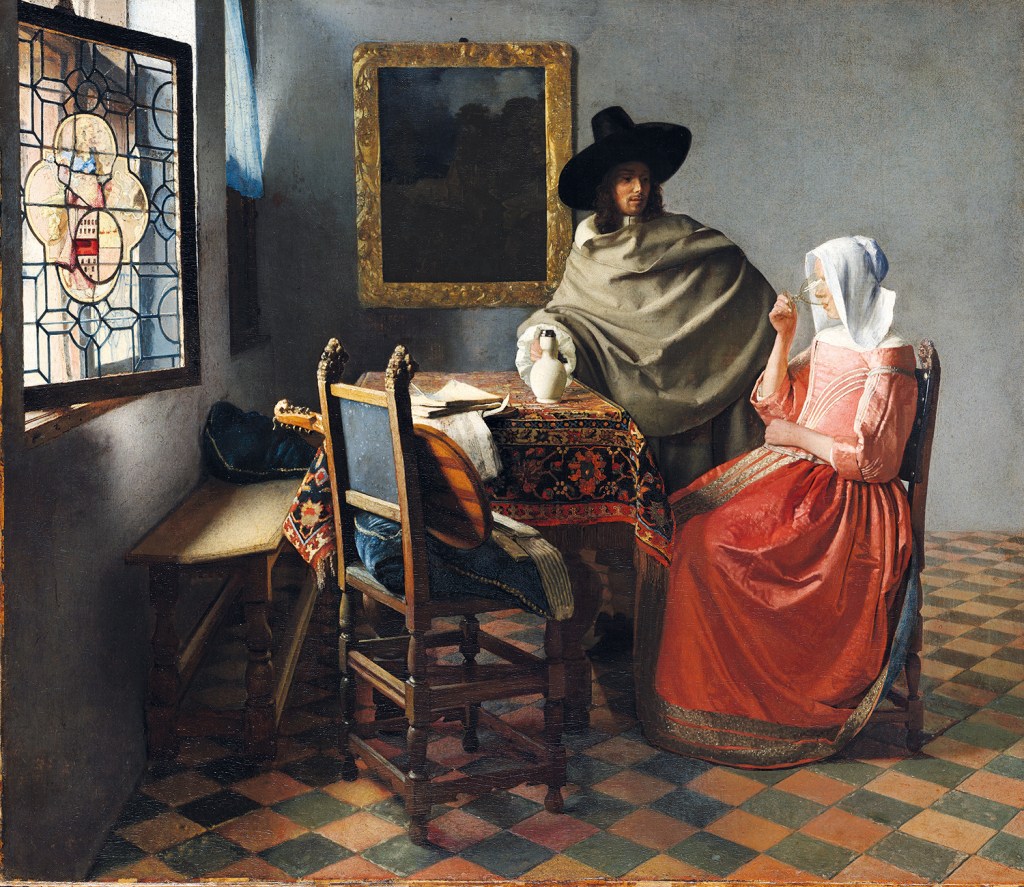
By “Girl Reading a Letter at an Open Window” (1657-58), the familiar elements are already in place: the table covered with the rucked oriental carpet, the painting on the wall behind, the curtain drawn aside to admit the viewer, the faint reflection of the girl’s head in the window glass. The only anomaly is the pile of wonky fruit spilling out of a tilted dish on to the table, a degree of disorder suppressed in later works. Vermeer’s everyday is not everyone’s everyday: it is transformed by order and transfigured by light.
Vermeer is the ultimate master of light. He doesn’t use chiaroscuro for dramatic effect like the Dutch Caravaggists; he uses it like a lighting technician to situate the actors within the scene and control the mood. He is, coincidentally, a consummate colorist who grasped the principle of optical mixing two centuries before the pointillistes, applying pure color in tiny dots to strike the eye with a vibrancy not achievable by blending. He painted what the eye sees, not what the brain assumes, but he was not a camera: he chose what to put in and what to leave out. The crusty hunks of bread on the table in “The Milkmaid” (c. 1660) look crisp enough to eat, but he cheated with the milk jug: as she tilts it to pour, the milk should be visible inside but he chose to contrast the white stream with the dark interior.
Every element in Vermeer’s compositions, from the fall of a curtain to the rucks in a rug, is coordinated to direct our attention to the subject. Only the “Girl with a Pearl Earring” (1665) has no context; behind her liquid gaze, it appears to have melted away. Who are these girls, all of a type like the props in his paintings? The Vermeer household was dominated by women: wife, mother-in-law and at least seven daughters. Did he get the girls to sit for him? Or did he play variations on a single model, as John William Waterhouse did with his water nymphs?
Vermeer’s women are not nymphs, but neither are they paragons of morality. The suggestion in several pictures is that they’re up to no good. “The Lacemaker” may fit the ideal of the Jesuit schoolgirl, but the other women — the letter writers in particular — are less exemplary. For someone who left no surviving correspondence Vermeer painted a lot of pictures of women writing letters — all of them, we are led to suspect, billets doux. “The Love Letter” (c. 1669-70) is littered with clues suggesting the writer has already done the dirty. The kicked-off mules and linen hanging out of the laundry basket tell their stories, as do the crumpled sheets of music in the shadows of the foreground cupboard indicating the occasion of sin. Music-making in male company was a moral hazard, as the reclining violas da gamba in other paintings warn.
Like other artists in the Dutch Republic Vermeer painted for the open market, and his images of women spiced with hints of romance would have appealed to female buyers at a time when the ladies of the house chose the furnishings and paintings. His women idling in domestic settings are unburdened by household chores. They are enjoying “me time,” a luxury the painter himself can only have enjoyed in his studio on the rare occasions when he got into it. After his father’s death in 1652 Vermeer had taken on his picture-dealing business and pub, the Flying Fox; he let out the pub but carried on picture dealing — probably his main source of income — throughout his life. In twenty-two years of marriage Catharina bore him fifteen children, of whom eleven survived. Even in a largish house they must have lived hugger-mugger: a bankruptcy inventory drawn up in 1675 after the forty-three-year-old artist’s sudden death from a “frenzy” possibly triggered by money worries records that his paint-grinding table shared the attic with thirteen drying racks for the family laundry.
The serenity of Vermeer’s art is a beautiful mirage. Painting can be a form of wish fulfillment, and Vermeer painted what he couldn’t have: a moment’s peace.
Vermeer is at the Rijksmuseum, Amsterdam, until June 4. This article was originally published in The Spectator’s UK magazine. Subscribe to the World edition here.



